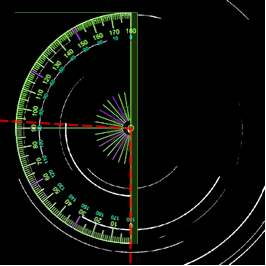Questions on the Earth in Space
Q15.
On a clear night, a camera was set up on a fixed stand pointing at the Pole Star. The camera shutter was opened and kept open for a number of hours. The diagram shows the paths of a number of stars appearing in the photograph.

(a)
(i) In the photograph, most of the stars appear as curved lines instead of dots. Why do the stars appear as curved lines?
The stars appear as curved lines because the Earth was spinning on its axis as it photographed the stationary picture of the stars. 
1 mark
(ii) The Pole Star appears as a bright dot in the middle, not as a curved line. Why does the Pole Star appear as a dot?
The pole star is positioned on the Earth's axis of rotation - it is directly above the North Pole of the Earth - therefore it does not appear to move at all. 
1 mark
(b) Study the diagram carefully. For how many hours was the camera shutter kept open? (give your answer to the nearest hour).
6 hours 
1 mark
Maximum 3 marks


